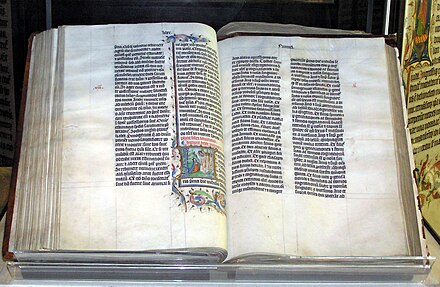Dyoenergism
| Part of a series on the |
| History of Christian theology |
|---|
 |
|
|
Dyoenergism (from Greek δυοενεργητισμός "two energies") is a particular Christological doctrine that teaches the existence of two energies (divine and human) in the person of Jesus Christ. Specifically, dyoenergism correlates the distinctiveness of two energies with the existence of two specific natures (divine and human) in the person of Jesus Christ, the position known as dyophysitism.
History
Dyoenergism stands in opposition to the view of monoenergism, which is the doctrine that Jesus has only one energy, and was advocated for by St. Dionysius.[1] Rather, dyoenergism teaches that Jesus Christ acts through two energies, divine and human. The Sixth Ecumenical Council held in Constantinople in 680-681 reaffirmed dyoenergism as church doctrine and condemned both monoenergism and monothelitism,[2] stating:[3]
And as we recognize two natures, so also we recognize two natural wills and two natural operations [...] And, as has been said, we rejected and condemned that most impious and unsubstantial heresy which affirmed but one will and one operation in the incarnate Christ our true God.
The term energy is derived from the term energeia, which typically means "activity" or "operation",[1] or more specifically in the "natural energy" sense employed by St. Maximus, a "natural, constitutive power,"[4] in other words, a capacity for a pattern of activity. The primary difference in the monoenergist controversy of the 5th and 6th centuries was whether energy is to be associated with person, which is one in Christ, or rather with his natures.[1] Dyoenergism is predicated on dyophysitism ('as we recognize[...] so also we recognize') - each different nature corresponds to a different energeia, as expressed by St. Cyril of Alexandria: "No sensible person would concede that things different in kind and nature possess the same operation."[5]
See also
References
- ^ a b c Bradshaw, David. ""The Essence-Energies Debate: Philosophical Background and Issues," workshop on "Akindynos' Role in the Hesychast Controversy," University of Bern, Switzerland, March 2019".
{{cite journal}}: Cite journal requires|journal=(help) - ^ Meyendorff, John (1989). Imperial Unity and Christian Divisions: The Church, 450-680 AD. St. Vladimir's Seminary Press. ISBN 978-0-88141-056-3.
- ^ "CHURCH FATHERS: Third Council of Constantinople (A.D. 680-681)". www.newadvent.org. Retrieved 2024-02-16.
- ^ Maximos the Confessor (2014). On Difficulties in the Church Fathers: The Ambigua, Volume I & II. Translated by Constas, Nicholas. Harvard University Press (published 28 April 2014). ISBN 9780674726666.
- ^ Admin, Admin (28 April 2016). "St. Cyril on Dyoenergism and Dyotheletism". Classical Christianity. Retrieved 16 February 2024.
Sources
- Hovorun, Cyril (2008). Will, Action and Freedom: Christological Controversies in the Seventh Century. Leiden-Boston: BRILL. ISBN 978-9004166660.
- Meyendorff, John (1983). Byzantine Theology: Historical Trends and Doctrinal Themes (Revised 2 ed.). New York: Fordham University Press. ISBN 9780823209675.
- Meyendorff, John (1989). Imperial unity and Christian divisions: The Church 450-680 A.D. The Church in history. Vol. 2. Crestwood, NY: St. Vladimir's Seminary Press. ISBN 9780881410563.
- Ostrogorsky, George (1956). History of the Byzantine State. Oxford: Basil Blackwell.
External links
- Classical Christianity (2016): St. Cyril on Dyoenergism and Dyotheletism